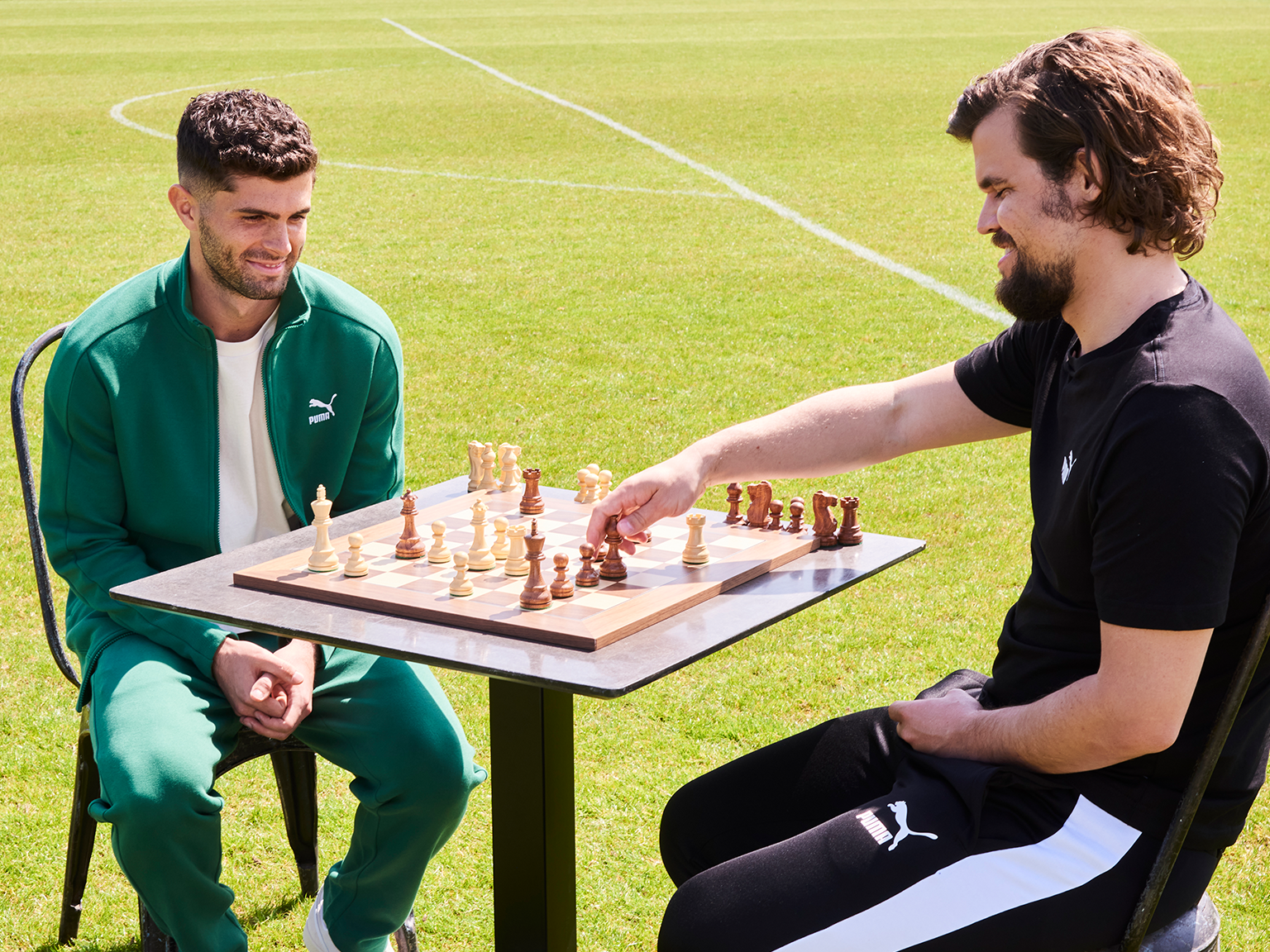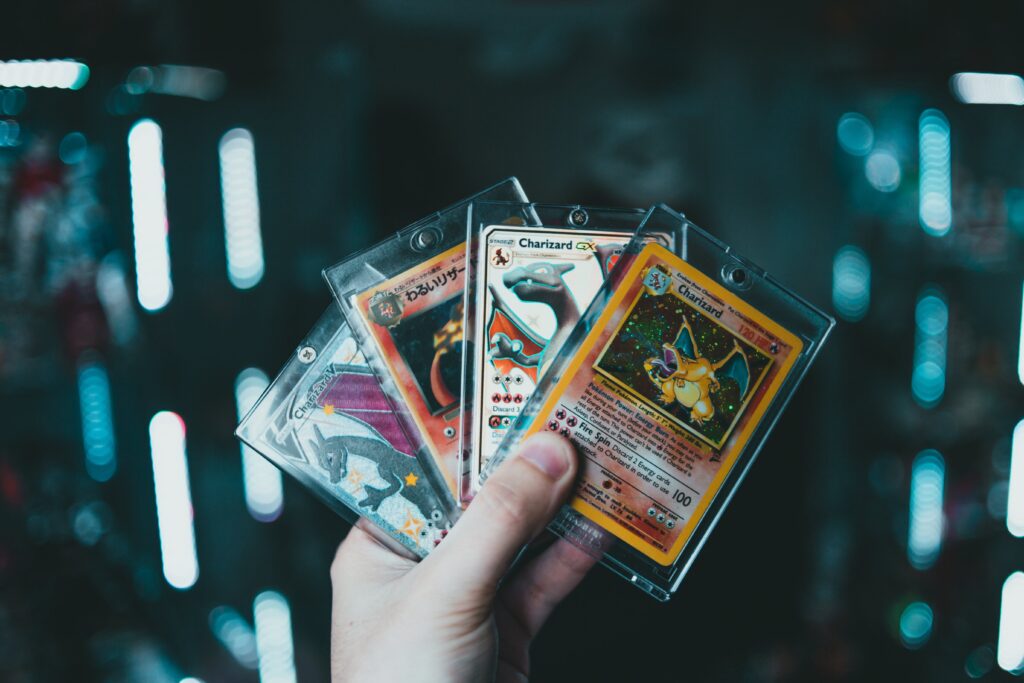To play a game, you typically need to know two things:
- How to win
- The Rules
Arguably, there is a third component, that is a bit harder to define:
3. THE ABILITY TO LOSE
While this third point may be debated, for our purposes, a game is defined as a struggle in which the players cannot act perfectly, and attempt to achieve a win-state within the confines of a rule set. Somewhere within that imperfection is the “fun,” as players try their best to win by exploring, testing, and discovering new and surprising situations. For some games, something else can emerge in this struggle with the potential to undermine the whole affair – the desire for expression.
Along the path to victory, players may realize success in certain strategies and tactics that play to their strengths. Some games, like American football (or even association football), inherently provide a type of expression through positional assignments. Fast runners are receivers, strong brutes are linemen, and sharp throwers are quarterbacks. This tendency to specialize according to your strength is not unique to team games, in fact it is present in all games, adjusted by the degree to which the game allows that expression to exist.
On the extreme opposite from American football there is chess. Not only in physicality, but also in format and variation. Chess is a two-player game with perfect information (both players see the boardstate and all possibilities at all times), and is played using a study of consistent patterns and repetitive boardstates – but not completely repetitive, as the complexity of chess allows for a huge dynamic range, in which perfection is still impossible (for now). As long as chess still allows imperfect play, a small amount of imperfect expression can emerge. For example, moves can be described as aggressive, risky, safe, or even weird and funny, and players may find themselves having a penchant for a certain type of play, resulting in expression.

Generally, expression exists within the framework of winning the game; it is only a question of how a player wins the game. While this can be a result of “playing to strengths” in order to maximize the chances of winning – for example, the chess player knows they do better playing aggressively, resulting in an aggressive expression – an issue can arise when a player forms a desire to express. In this scenario, the player ties the expression to winning, and creates a new goal of the game – to win in a specific way. At the tactical level, this can cause a player to take actions that advance their goal of expression at the expense of their goal of winning, because both goals are desirable. An example of this is when a player tries to ‘show off’ – they put their personal desire of expression ahead of their desire to win the game (although the desire to win is still present).
For many games, these theories of expression and goal-desires are a byproduct of their structure – but what happens when expression is encouraged and ingrained in the design itself? With trading card games (TCG), players collect game pieces (cards) and use them to craft a custom deck with which to battle other players who have done the same. While players could collect the most effective game pieces, or even the most valuable pieces, TCGs also encourage collecting on the basis of personal taste, which is highly expressive.

When two players compete in a TCG game, they often intentionally play with cards they like rather than cards that are the most likely to win the game. Sometimes the cards they like are also the best cards – other times, not so much. When the disparity between what a player wants to express and what will win the game becomes too large, this is where issues may arise. When the goals of both competitors do not align, it is almost as if they are playing two different games. Imagine if American football teams put on a choral concert during halftime. Their expressiveness level would be how well they sing, their effectiveness level would be how well they play. They want to win, but they also want to sing well. While it is possible that their wide receiver is also an excellent tenor, these are ultimately conflicting goals, and the game will likely suffer.
The first solution that comes to mind – and is often attempted by TCG players – is to level-set your game and make sure both players are aligned with their goals. In other words, both decks are understood to have a similar level of game-goal and expression-goal tactics before the game begins. But how can they assign a level to something as subjective as expression? Or assign a level of effectiveness to something as complex as a TCG? And standardize these levels so that both players can understand them the same way? The truth is, they won’t know until they begin playing. Only after the game begins do the skill and expression levels become apparent, and inevitably one player will feel more hindered by their expression than the other. A very common expression heard at the TCG table is “I’m just trying to do this one thing. Let me live one more turn!” They can’t level-set without playing, therefore they must play without level-setting.
Alternatively, let us look at our other extreme example, where little expression is possible. In chess, a theoretically solvable game, there is still a small amount of expression resulting from our inability to calculate the sheer scale of possible moves. If expression is found in imperfection, or incomplete information as to what is optimal, then perhaps decreasing the collective knowledge of what strategy is best can result in more room for expression. If no one knows what the best move is, then all moves become equal, and players are free to express themselves however they see fit, as they are unable to knowingly act contrary to the goal of winning. Heuristics will still likely define a range of optimal and sub-optimal moves, but that range will begin much wider and only narrow as more tests occur. In other words, the potential for expression is greatest within new environments, and lessens over time as the range of effective strategies decreases, until ultimately there is only one strategy that is guaranteed to win, and therefore has no expression.
This is ultimately the driving force behind TCG set rotation (where some cards are phased out when new cards are printed) – not to make money by forcing players to purchase new products (although that is also technically a reason), but to keep the game fresh with new opportunities for expression and exploration. Most other games do not concern themselves with constantly expanding their game, because those games are not concerned with expression in the same way. TCG players don’t just want to win, they want to do something cool and collect cards that they like. When cards are new and untested, they have the most opportunity to marry both goals and enjoy successful games that are both competitive and expressive.
In conclusion, the next time you’re playing a game, and you notice a player’s desire for expression is diverging from their goal to win, instead of trying to level-set or control their actions, try thinking of ways to introduce ambiguity as to what is optimal, or to add room for experimentation. If the fun of a game comes from the struggle, then make sure that struggle has enough room for each player to express themselves without knowingly hindering their effectiveness. Remember that although you can enforce the same rules, you can’t always enforce the same goals – and if you have different goals, then you might as well be playing a whole different game.

